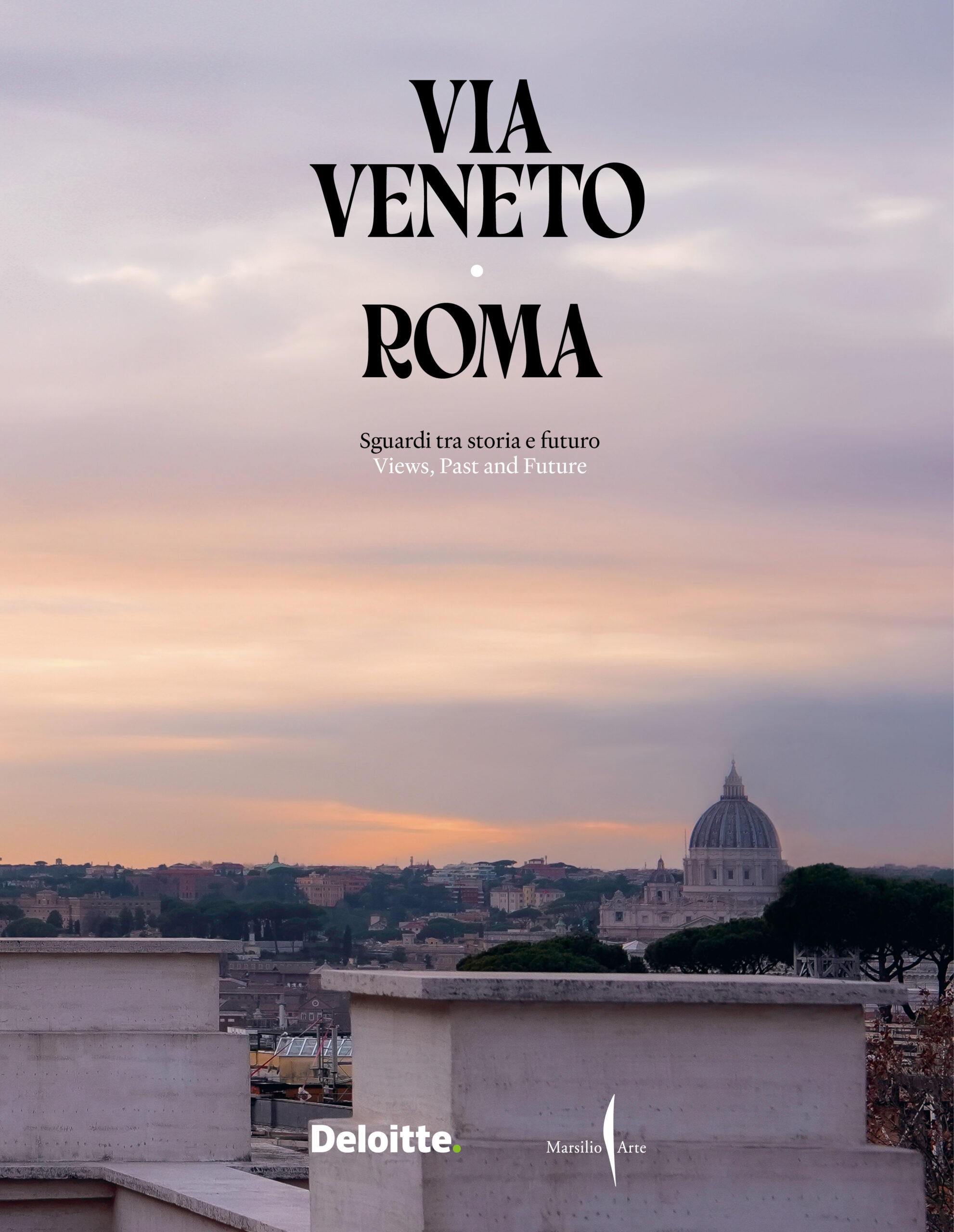The volume is an excursus on the myth of Via Veneto, which reached its peak during the post-war reconstruction years. The heart of the Roman “dolce vita” and a meeting place for illustrious figures and representatives of high finance, Via Veneto established itself as a symbol of rebirth in boom-era Italy. It stood at the center of a vibrant and optimistic cultural system that, between the 1950s and 1960s, gained new momentum.
Introduced by a contribution from the curator Denis Curti, the book continues with the words of Paolo Mereghetti, film critic and historian, who outlines the contours of the incredible Fellinian arc that transformed Via Veneto into a crossroads of celebrities and paparazzi—an iconic setting of that era’s café-society. Economist Giovanni Farese then explores the aspect of Via Veneto most closely tied to the economy and high finance, which in those years earned it the nickname “citadel of the economy” and a symbol of entrepreneurial dynamism. In a later section, Farese focuses on the present day and the identity of Palazzo Broggi at number 89, once home to the Institute for Industrial Reconstruction (later known as IRI), and now the new Roman headquarters of the company Deloitte.
Enhancing the volume is a series of historical photographs that retrace the most significant moments in the history of Via Veneto: from Fellini’s Dolce Vita film set to the paparazzi’s escapades among cinema personalities frequenting its corners and cafés, to the historic buildings that represent the pillars of the capital’s and Italy’s economic life, as well as the most iconic manifestations of Italian and international entrepreneurial dynamism of those years. The volume closes with shots by Gabriele Pupillo—snapshots of the present that bring the building at number 89 back to life and revive that “Italian fairy tale” with an eye toward the future.
35,00 €




